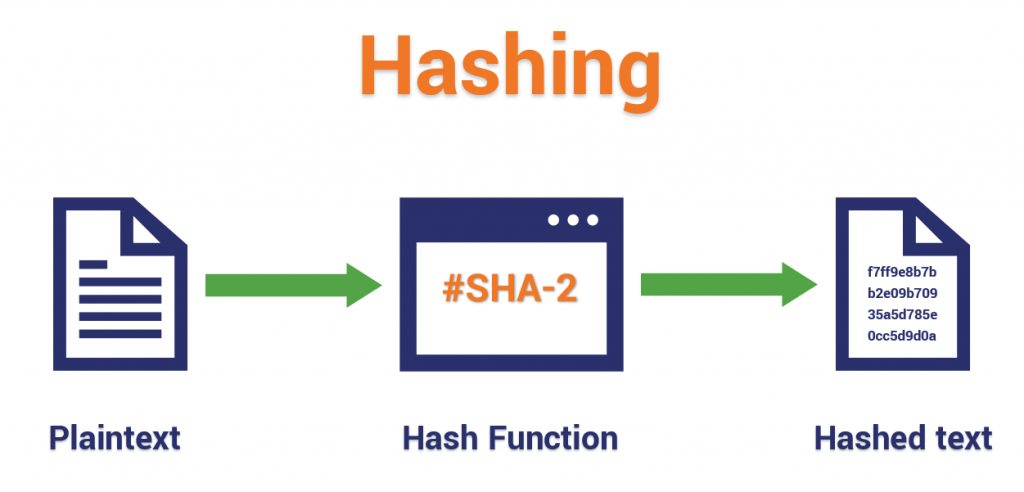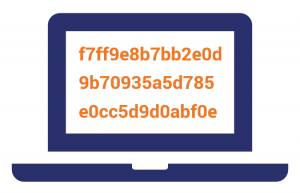What makes Hashing Ads difference?
Hashing is a process that generates a value or values from a string of text using a mathematical formula.
Hashed data: Definition
Hashed data maps the original string of characters to data of a fixed length. An algorithm generates the hashed data, which protects the security of the original text.
About URL parameters
URL parameter is a way to pass information about a click through its URL.
You can insert URL parameters into your URLs so that your URLs track information about a click. URL parameters are made of a key and a value separated by an equals sign (=) and joined by an ampersand (&). The first parameter always comes after a question mark in a URL.
How does Encryption Work?
Let’s take a look at encryption using a simple cipher. We’ll take a page out of Caesar’s playbook and go with a shift cipher. I’m going to encrypt a sentence using a mono-alphabetic shift cipher that simply replaces each letter with one that is sequentially three places ahead of it.

Modern Encryption
Before we can talk about modern encryption ciphers, we need to talk a little bit about public and private keys and how the digital revolution has changed encryption. All of the examples that we just went over are what we call Private Key Cryptography. Encryption was entirely contingent upon a private key, which had to be physically exchanged in order for decryption to take place. If you know anything about Private Keys, it’s the fact that they are sacrosanct.
Today, the most common forms of encryption are:
- Asymmetric Encryption – This is the Public Key example we just gave. One key encrypts, the other key decrypts. The encryption only goes one way. This is the concept that forms the foundation for PKI (public key infrastructure), which is the trust model that undergirds SSL/TLS.
- Symmetric Encryption – This is closer to a form of private key encryption. Each party has its own key that can both encrypt and decrypt. As we discussed in the example above, after the asymmetric encryption that occurs in the SSL handshake, the browser and server communicate using the symmetric session key that is passed along.
The key is that encryption is reversible. Hashing is not.
What is Hashing?
Hashing is the practice of using an algorithm to map data of any size to a fixed length. This is called a hash value (or sometimes hash code or hash sums or even a hash digest if you’re feeling fancy). Whereas encryption is a two-way function, hashing is a one-way function. While it’s technically possible to reverse-hash something, the computing power required makes it unfeasible. Hashing is one-way.
Now, whereas encryption is meant to protect data in transit, hashing is meant to verify that a file or piece of data hasn’t been altered—that it is authentic. In other words, it serves as a check-sum.

Here’s how it works, each hashing algorithm outputs at a fixed length. So for instance, you may hear about SHA-256, that means that the algorithm is going to output a hash value that is 256 bits, usually represented by a 64 character hexadecimal string (h/t Matthew Haslett).
Every hash value is unique. If two different files produce the same unique hash value this is called a collision and it makes the algorithm essentially useless. Last year, Google created a collision with the SHA-1 hashing algorithm to demonstrate that it’s vulnerable. SHA-1 was officially phased out in favor of SHA-2 in early 2016. But Google had a point to make so it devoted two years’ worth of funds, man hours and talent in a partnership with a lab in Amsterdam to make something that was to that point more of an abstraction into a reality. That’s a long way to go to prove a point. But Google went there.
Anyway, here’s an example of hashing, let’s say you want to digitally sign a piece of software and make it available for download on your website. To do this, you’re going to create a hash of the script or executable you’re signing, then after adding your digital signature you’ll hash that, too. Following this, the whole thing is encrypted so it can be downloaded.
That’s actually how code signing works. Just remember, no two files can create the same hash value, so any alteration – even the tiniest tweak – will produce a different value.

Common Hashing Algorithms
Just like we did with encryption, let’s take a look at some of the most common hashing algorithms in use today.

MD4 – MD4 is a self-loathing hash algorithm, created in 1990, even its creator, Ronald Rivest, admits it has security problems. The 128-bit hashing algorithm made an impact though, it’s influence can be felt in more recent algorithms like WMD5, WRIPEMD and the WHSA family.
MD5 – MD5 is another hashing algorithm made by Ray Rivest that is known to suffer vulnerabilities. It was created in 1992 as the successor to MD4. Currently MD6 is in the works, but as of 2009 Rivest had removed it from NIST consideration for SHA-3.
SHA – SHA stands for Security Hashing Algorithm and it’s probably best known as the hashing algorithm used in most SSL/TLS cipher suites. A cipher suite is a collection of ciphers and algorithms that are used for SSL/TLS connections. SHA handles the hashing aspects. SHA-1, as we mentioned earlier, is now deprecated. SHA-2 is now mandatory. SHA-2 is sometimes known has SHA-256, though variants with longer bit lengths are also available.

RIPEMD – A family of cryptographic hashing algorithms with a lengths of 128, 160, 256 and 320 bits. It was developed under the framework of the EU’s Project Ripe by Hans Dobbertin and a group of academics in 1996. Its 256 and 320 bit variants don’t actually add any additional security, they just diminish the potential for a collision. In 2004 a collision was reported for RIPEMD-128, meaning RIPEMD-160 is the only algorithm from this family worth its salt (this is going to be an amazing pun in about two paragraphs).
WHIRLPOOL – Designed by Victor Rijmen (the co-creator of the AES algorithm we discussed earlier) and Paulo Barreto in 2000. Since then it has undergone two revisions. It produces 512-bit hashes that are typically represented as 128-digit hexadecimal numbers.
TIGER – A fairly new algorithm that is beginning to gain some traction with file sharing networks and torrent sites. There are currently no known attacks that are effective against its full 24-round variant.
What is Salting?
Salting is a concept that typically pertains to password hashing. Essentially, it’s a unique value that can be added to the end of the password to create a different hash value. This adds a layer of security to the hashing process, specifically against brute force attacks. A brute force attack is where a computer or botnet attempt every possible combination of letters and numbers until the password is found.
Anyway, when salting, the additional value is referred to as a “salt.”
The idea is that by adding a salt to the end of a password and then hashing it, you’ve essentially complicated the password cracking process.


